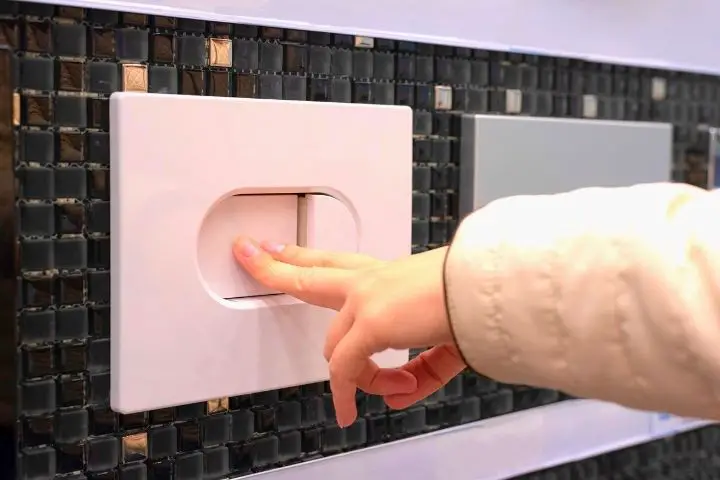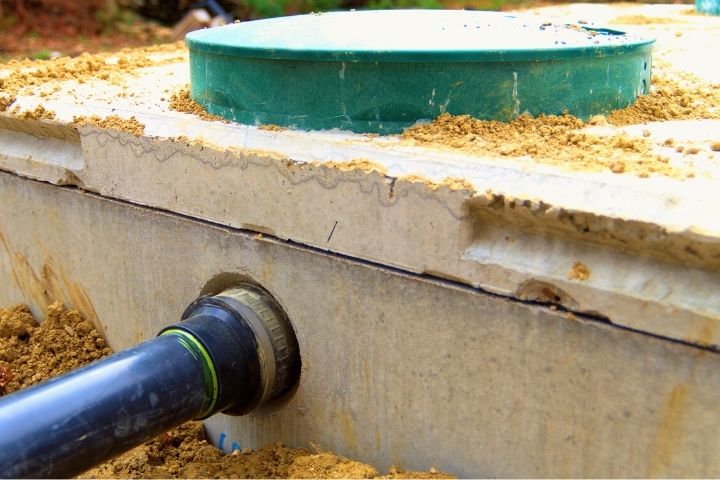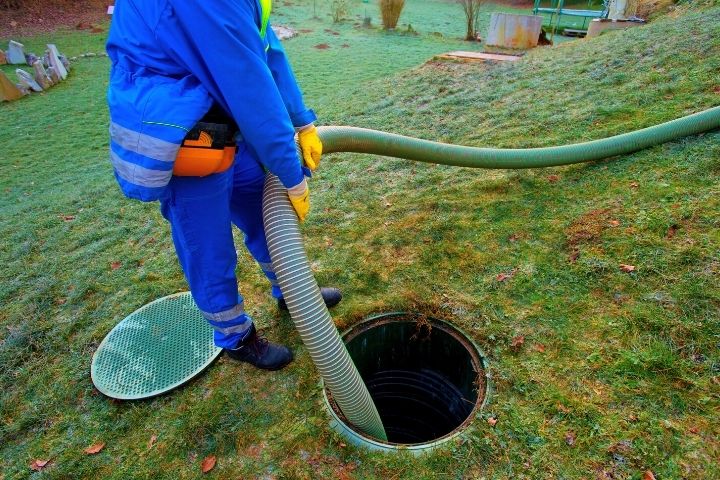How to Tell if Septic Tank Is Full: 7 Red Flags You Shouldn’t Ignore
Ever experienced a sewage backup? If the answer is no (and you don’t want it to become a ‘yes’ any time soon), watch out for that septic tank!
But how exactly can you tell that your septic tank is full?
No need to get down on your knees and lift the lid right away!
Some of the tell-tale signs of a full septic tank include a sudden foul odor, slower drain, gurgle sounds in the pipes, weak flushing, and water pooling near the tank itself. (More below!)
These might sound all too easy on your ears, but how do you know that it’s not just another pipe malfunction?
Let’s find out…
What Are the Signs That Your Septic Tank is Full?
Knowing when you have a full septic tank takes more than just calling out a few leaks here and there around your house. You need to take extra measures to inspect your septic system to ensure that you’re not confusing a drainage problem for a filled-up tank.
Otherwise, you may end up spending a lot of money on needless pumping. And realize financial losses that are pretty big (even though not nearly as big as when moving a septic tank).
So, how do you tell if your septic tank is full and ready for pumping?
1. A Slow Drain

A slowed-down drain is usually one of the initial tell-tale signs of a filled-up septic tank. When this happens, it mostly affects ALL of your house’s draining function.
You have to understand that when the slow drain is only happening in one sink or a specific room, then that probably means that there’s a problem with that particular drainage system or room.
It could be a case of bad clogs in the outlet pipes or something along those lines. In that case, you should have a professional plumber take a look at it.
If it’s indeed because you have filled-up septic, then you’ll also notice that every sink, bath, or shower drain in your home has the same problem.
2. Bad Odor from the Sewer
An overfilled septic system carries a pungent smell that comes as a result of the organic waste that washes into the tank. For many, the smell comes off as ‘rotten eggs’ and can choke the living daylight out of you…
But how do you tell whether it’s because of full septic or just another drainage problem?
Well, under normal conditions, properly functioning septic tanks should not be releasing this type of smell out into the open air.
If the odor is a result of other problems in your drainage, then it’s likely only smelled when you’re outside the house.
On the other hand…
If the smell backs up into every room in your house, then that is a mighty dandy sign that you’re dealing with full septic!
3. Frequent Backups into the House
This is one of the less-pleasant and most obvious signs proving your waste tank is probably full. You’ll start noticing sewer backups in some of your house drains – more so, the lower-placed ones.
If the sewer backup is mostly coming from your basement drains, then that is a sure sign of filled-up septic. You may find that this backup water has spilled from the lower toilets or shower rooms and flooded the immediate rooms.
When such things happen, you need to act fast and get a verified septic service to clear the mess. You will also need to get professionals to restore your floor.
As for your carpeting, I’m sorry to say but it’s doomed! If it’s completely soaked, all you can do is just throw it away.

If, however, the backup is only spotted in one or a few drains upstairs, then that’s likely a unique problem that should be dealt with separately.
4. More Grass or Vegetation Around Your Septic
One thing that we tend to overlook about septic waste (because of its foul smell) is that it’s also very rich in organic nutrients. Yes – the same kind needed by plants and many vegetation to ensure that they have a steady, healthy growth.
When your septic tank becomes full, the sludge that’s supposed to be sitting at the bottom will rise up and go through your outlet pipe together with the liquid waste. And if it’s super full, the nasty liquids can even leak out to the surface directly above the tank!
Now, when this waste interacts with the roots of plants around your property, your home might turn into a botanical garden over a very short time!
You will begin noticing a patch of exceptionally lush grass or vegetation growing above or around your septic tank.
5. Weak Flush in Toilets
When you notice weak flushing in every toilet in your house, there is a big chance that you have full septic.
In most cases, the weak flush may look like a slow drain except that it is specifically affecting your toilets this time.
When a septic tank fills up, the waste may start flowing back into the pipes, leaving very little room for the incoming toilet water to occupy. This will affect the regular functioning of the system and will require immediate pumping to solve the matter.
⚠️ You must act IMMEDIATELY your toilets start having weak flushes. Doing so will save you from the extra cost that you may face cleaning up backflows or renovating your washrooms.
6. Gurgling Sounds in the Pipes

This sign doesn’t give you much to go by when trying to discern whether you’re dealing with an occasional clog in the pipes or a full septic tank.
You will hear this gurgling sound mostly when you flush the toilet or empty your bathtub.
If it’s a normal pipe clog, then the sound will disappear after you have a professional do a spot-check on it.
On the other side of the tracks, if you’re dealing with full septic, the gurgling sound in the pipes below will persist even after the mini maintenance.
This means that you’ll need to get your septic pumped as soon as yesterday or else you’ll experience a totally different narrative next time you visit the toilet.
7. Water Pooling on Your Yard
Water will start accumulating around your septic tank when the waste level exceeds the pit’s capacity.
Nonetheless, pooling water in your yard may also be a result of a recent heavy downpour. Rainfall will easily accumulate inside slight depressions on the ground when it doesn’t find a channel through which it can flow out.
The only difference is that if it’s indeed rainwater that you are looking at, then it will likely evaporate and disappear in a few days.
However, if it is water from the septic, then that means that the pooling water will still be present even after the rains have stopped.
If you’re undoubtedly sure that you’re dealing with the latter, then you need to stop all drainage use in your house and get the tank pumped ASAP.
What to Do When Your Septic Tank is Full

The only thing that you should do when your septic tank is full is contact your local septic service provider.
Their first order of business would mostly be to pump out all the effluent from your septic.
If all goes well, you’ll both call it a day…
If the handlers spot any issue with your septic system, then you’ll have to consider doing more thorough maintenance. This could be when you’re either dealing with a clog or leakage in the pipes or even corrosion, which may demand a complete re-laying of your septic.
When Should I Clear Out My Septic Tank?
There are several factors that you must consider when deciding how frequently you need to pump your septic.
These include:
- Size of the septic tank
- Amount of sludge in the tank (consider clearing your septic if it’s more than a 1/3 of the tank)
- Volume of wastewater from your home (more water released means faster filling for the septic)
Besides that, most septic services recommend that you need to pump your tank at least once every 3 – 5 years.
But if you want to double check the levels of waste water, you can DIY it using tools as in the video below.
The Importance of Septic Tank Maintenance
You must schedule regular septic maintenance because of the following reasons:
It prevents break-outs of disease-causing viruses and bacteria. These harmful pathogens are normally found in domestic sewage and can easily transmit diseases should they leak out from a full septic tank.
It prevents backflows from the septic into your home that can give you massive headaches when cleaning up.
It prevents contamination of your water reserves. This could either be a nearby well, bath, or even pool.
It helps you dodge the high cost of labor-intensive repairs down the line.
Frequently Asked Questions

1. Why is my septic tank filling up even after it has been pumped?
The main cause of this is likely to be a problem with your drain field or plumbing.
Having a septic tank fill up soon after being pumped out is a strong indicator that you might have other underlying issues with your drain system.
The most common culprits are broken valves or trapped bubbles within the pipe networks.
Septic systems normally have valves within the pipes that prevent backflow under normal functioning. When these valves break down, wastewater from the septic will occasionally find its way up the drain even when the tank is not truly full.
Adding to that, when you flush down excess water into your septic, it will affect the rate at which the ‘good’ bacteria break down the solid waste. What you get from this is a sludgy effluent that is not completely broken down – leading to trapped gases within the waste. It’s these gases that push all the solid muck up, causing the tank to fill up pretty fast.
2. Can I shower if my septic tank is full?
Showering when you have a full septic tank is really not a bright idea.
Since your tank can’t take in any more water, your shower will most likely have a slow drain or even worse, a backflow.
I hope you see how this could turn into a very messy affair for you…
The right step to make is to halt every drainage use in the house and have your septic emptied before resuming operating them once more.





